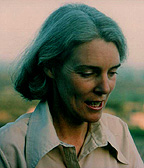History of the Fowler Herbarium
The Fowler Years
 Appointed in 1880, Rev. James Fowler was Queen's 2nd Professor of Natural History. As well as teaching botany, zoology & geology and initiating the Queen's Summer School, he established a natural history museum including the herbarium, and enthusiastically used it in teaching and research. Under his care, the herbarium prospered, with many gifts of exotic specimens, exchanges from Europe and Australia, and Fowler's own extensive collecting in Ontario and the Maritimes. By his retirement in 1907, the herbarium had accumulated more than 40,000 specimens.
Appointed in 1880, Rev. James Fowler was Queen's 2nd Professor of Natural History. As well as teaching botany, zoology & geology and initiating the Queen's Summer School, he established a natural history museum including the herbarium, and enthusiastically used it in teaching and research. Under his care, the herbarium prospered, with many gifts of exotic specimens, exchanges from Europe and Australia, and Fowler's own extensive collecting in Ontario and the Maritimes. By his retirement in 1907, the herbarium had accumulated more than 40,000 specimens.
The Beschel Years
 For 50 years after Fowler, the herbarium languished in mothballs until the appointment, in 1959, of Roland Beschel, a plant ecologist and authority on lichens. An ardent believer in the fundamental importance of systematics in biology, Beschel not only restored Fowler's historic collection but completely revitalized the herbarium. Aided by assistant curators Garwood and Zavitz, he added almost 60,000 specimens to the herbarium, including extensive collections from the Canadian arctic, Greenland, Scandinavia and Russia. He also obtained a permanent home for the herbarium in Earl Hall when it opened in 1966.
For 50 years after Fowler, the herbarium languished in mothballs until the appointment, in 1959, of Roland Beschel, a plant ecologist and authority on lichens. An ardent believer in the fundamental importance of systematics in biology, Beschel not only restored Fowler's historic collection but completely revitalized the herbarium. Aided by assistant curators Garwood and Zavitz, he added almost 60,000 specimens to the herbarium, including extensive collections from the Canadian arctic, Greenland, Scandinavia and Russia. He also obtained a permanent home for the herbarium in Earl Hall when it opened in 1966.
The Crowder Years
 Adele Crowder took over the lichen and moss collection in 1969 and became curator after Beschel's death in 1971. With the assistance of Garwood, until his death in 1992, Crowder added about 2,000 specimens per year, and ushered the herbarium into the computer age. All of the herbarium's 140,000 specimens continue to be entered into an electronic database. During this period, the herbarium played new roles in environmental planning and biodiversity monitoring, and Crowder forged links with Ontario's Natural Heritage Information Centre. After her retirement, she continued as a driving force behind the herbarium, secured a new home for the facility in the Biosciences Complex, and in 1996 published an extensive update of Plants of the Kingston Region.
Adele Crowder took over the lichen and moss collection in 1969 and became curator after Beschel's death in 1971. With the assistance of Garwood, until his death in 1992, Crowder added about 2,000 specimens per year, and ushered the herbarium into the computer age. All of the herbarium's 140,000 specimens continue to be entered into an electronic database. During this period, the herbarium played new roles in environmental planning and biodiversity monitoring, and Crowder forged links with Ontario's Natural Heritage Information Centre. After her retirement, she continued as a driving force behind the herbarium, secured a new home for the facility in the Biosciences Complex, and in 1996 published an extensive update of Plants of the Kingston Region.